Hip replacements: 50 years since NI's first operation
- Published
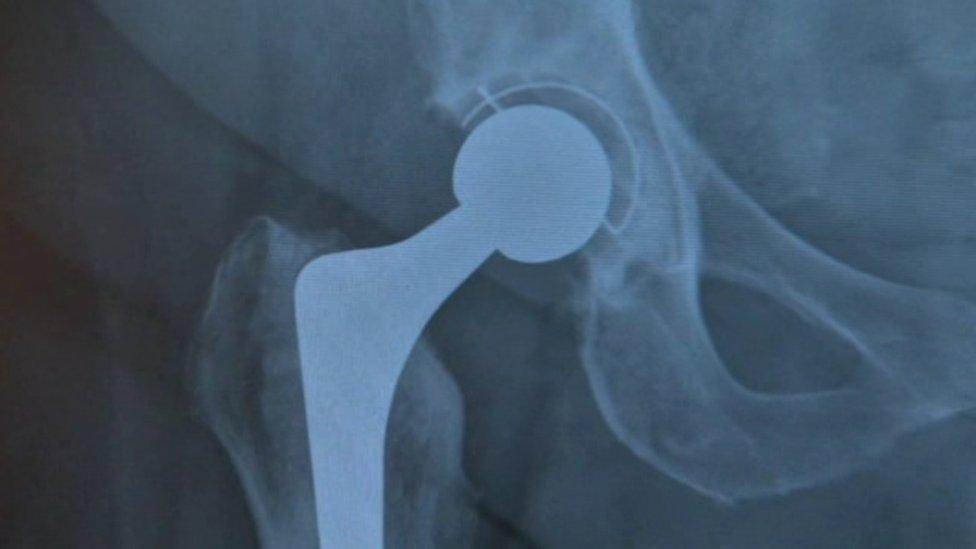
Thousands of people in Northern Ireland have had their lives improved by hip replacements
Fifty years ago this week, Northern Ireland's first hip replacement was performed at Musgrave Park Hospital in Belfast.
On that Sunday morning in 1967, about 20 doctors and nurses crammed into a tiny operating theatre to learn how to perform the operation which has since transformed the lives of hundreds of thousands of people.
The visiting surgeon was Mr Peter King, who developed one of the earliest un-cemented prostheses for hip joint replacement.
His right hand man was local trainee surgeon John Halliday.
Mr Halliday, who was Musgrave's senior trainee at the time, spoke to the BBC about a day he remembers well - describing it as momentous for Northern Ireland's health service.
"It was a new treatment we hadn't had before which held out great promise to help a lot of people who were having very severe pain due to arthritis," he said.
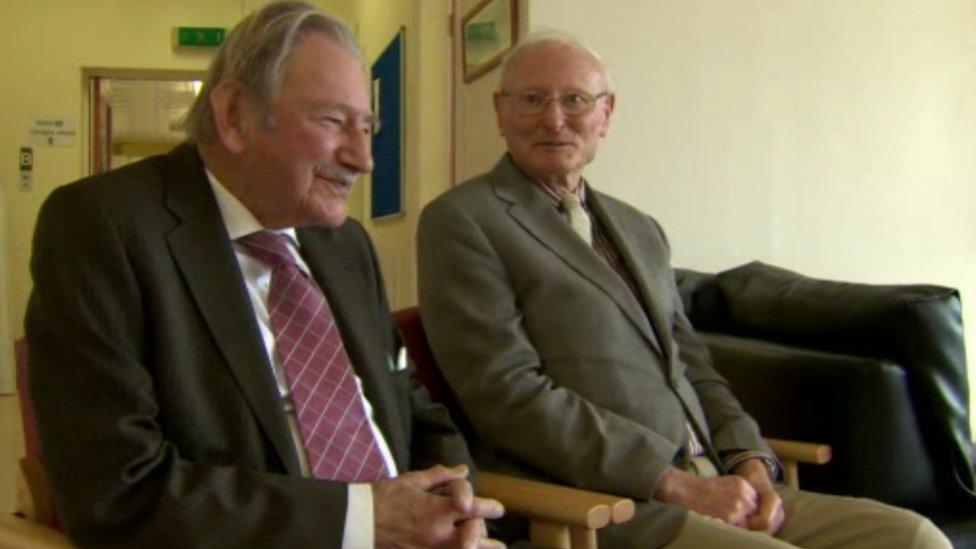
Anaesthetist John Alexander and surgeon John Halliday reminisce about the operation
Mr King had been invited from England to perform the operation. Once Mr Halliday had been taught the procedure, he was to show the other consultants in the hospital.
"The extraordinary thing was that the lady was going to have two hips operated on - one after the other," he recalled.
When Mr King completed the first hip, he turned the lady over and operated on her other side, which is rarely done these days.
"The monitoring in the theatre back then was much more primitive than it is now," said Mr Halliday.
'Exciting'
Also in the team was consultant anaesthetist John Alexander. Sitting alongside his former colleague in the hospital this week, Dr Alexander said it was an exciting time.
"It was a Sunday morning when we were all asked to make a point of coming into the hospital, which was unusual back then, and I was in charge of anaesthetising the patient," he said.
In the first year, a dozen operations were carried out. That number has risen to more than 1,200 a year.
Another 3,000 await that phone call or letter from Musgrave Park Hospital to say they will be seen.
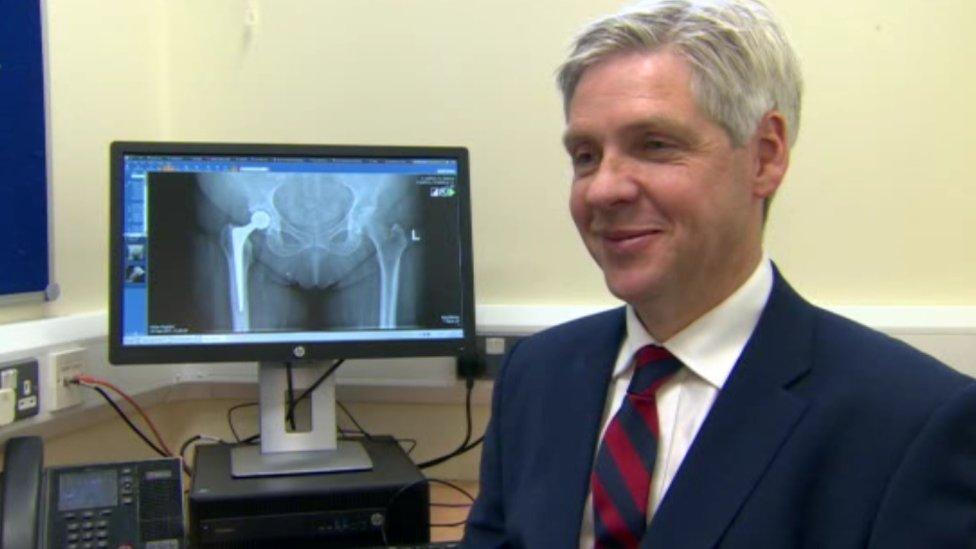
Gavan McAlinden says that with greater investment there could be many more hip replacements
Gavan McAlinden from the Belfast Health and Social Care Trust said that number would be a lot higher with additional theatres, surgeons, nurses and physiotherapists.
"Of course, we would like to see shorter hospital waiting lists, but that would require greater investment in theatres, clinics and investment in manpower," he said.
Mr McAlinden said the unit was a victim of its own success as a new hip generally lasted for about 15 years.
"It is a major operation that we have learnt to do very well," he said.
"What we do is take a deformed socket and a deformed head which are two components of the hip and we take those and replace them with metal and plastic which moves freely," he said.
"Almost overnight a patient's pain can ease, then go away... at 13 years over 95% of hips will still be working - only a tiny minority will fail at 15 years."
Four secretaries
While 50 years ago surgery was a male-dominated profession, it took a woman to co-ordinate all the operations including appointments, waiting lists, surgery and any follow-ups.
There were four secretaries who worked for the orthopaedic surgeons across Northern Ireland.
One of them was Betty Beavis, who was employed in the health service between 1957 and 1999.
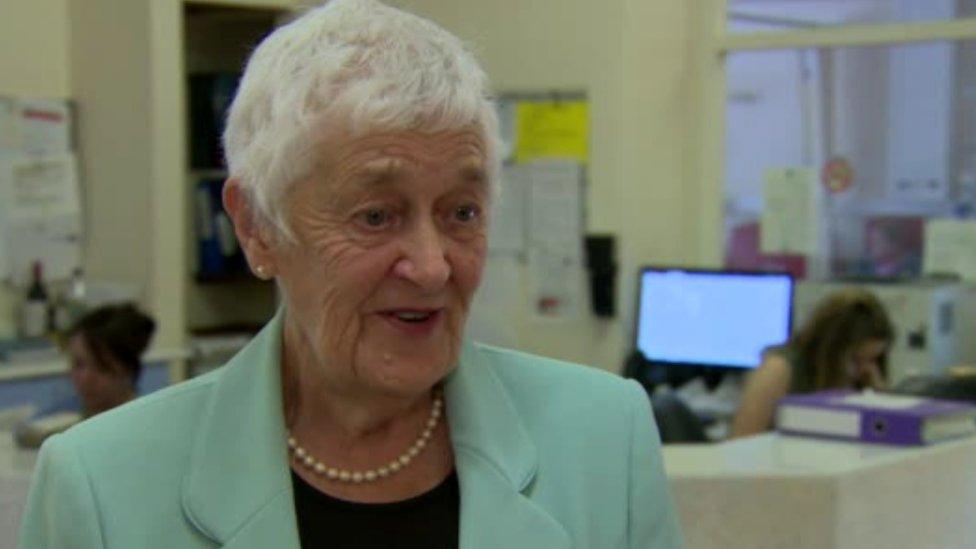
Betty Beavis said there was great camaraderie in the Musgrave Park Nissen huts
She told BBC News NI that, despite the less-than-salubrious surroundings, she loved her job.
"Everyone was in Nissen huts, the operating theatre was in a solid building but the patients all lay in the huts, some for several months," she recalled.
Ms Beavis said patients and staff got to know each other well as there were 32 patients in each hut, and the secretaries worked in side wards.
A total hip replacement is considered one of the most successful surgical interventions ever developed, with the first procedure taking place in 1891.
In those very early procedures, ivory was used for implants - now a combination of metal, or ceramic ball on plastic, is used.
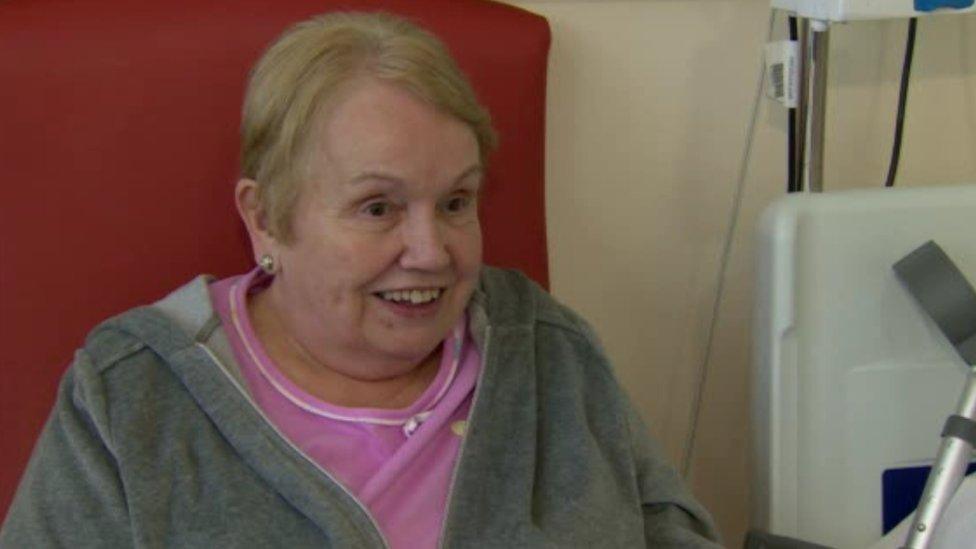
Elizabeth Brown - just back from the gym
Three days after having her hip replaced, Elizabeth Brown is recovering on the ward she and making very good progress.
"I am just back from the gym where I had to climb the stairs and raise my legs," she said.
"It was hard but I am getting there. I should get home later this afternoon - not bad three days after getting a new hip - it's moving away in there very nicely."